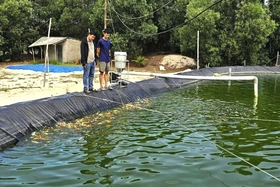4bu4Yzom4bqh4bq/e8O1w7Xhu6gqw7LDlGTDtOG6v8SDKkDhur574buDJsOAe+G7gy3huqLEg+G7h8O1e3F74buHJuG6oOG7j+G7g8O1w7Utw6Dhu4Phu4/huqPEg+G7jybEguG6oeG7g+G7h+G7g+G7gWThuqEmWuG7g+G7h8SDVybhu4Lhu5HDtMO1w7R74buH4bqjZOG7h2ImcWTDtWThu4Phu4cm4buPxIPhu43hu5Fk4buPxIPhuqPhu7gvYzpA4bu4w7Im4bqh4bq/e8O1w7Xhu6gqw7LDgOG7g+G6o3QqQMWpw7XDteG7g+G6oWR7w7TEgybDkuG7j+G7g+G6q8OdJuG6ouG7j8OdJsOU4buPe+G7hybhuqJk4buHYybDlGNkxIPhu4dZJsSD4bqh4buD4buH4buD4buBZMO1w7Qme8O0JsO0Y8SDJlFkxIPDtOG7h3vhu4EmROG7h8O1w7Rkw7Thu5HDtMSDJuG7g+G6qybEguG6oeG7g+G7h+G7g+G7gWThuqHDteG7uC/DskDhu7jDsibhuqHhur97w7XDteG7qCrDskPEg3vhuqMqQMWpw7XDteG7g+G6oWR7w7TEgybDkuG7j+G7g+G6q8OdJuG6ouG7j8OdJsOU4buPe+G7hybhuqJk4buHYybDlGNkxIPhu4dZJuG6q3vhu4Hhu4Phu5HDtSbEg+G6oeG7g+G7h+G7g+G7gWTDtcO0JnvDtCbDtGPEgyZRZMSDw7Thu4d74buBJkThu4fDtcO0ZMO04buRw7TEgybhu4PhuqsmxILhuqHhu4Phu4fhu4Phu4Fk4bqhw7VZJmN7w7Umw7V7ZOG6oybDtGN7w7Qmw7RjxIPhu4/Egybhu4fEg8SD4bqjw7Umw7Thu4Mmw6DEgybhu4Phu5HDtMO1w7R74buH4bqjZOG7h2ImcWTDtWThu4Phu4dZJuG7keG7h+G7kcO14buRe+G6vybDteG7g+G6v+G7kcO0ZOG7g+G7h8O1WSZ74buH4bqjJsSDc8O04buPe+G7g+G7j+G6o2Thu4d74buPdCbhuqPEg8O0xIPhu4/hu4Fk4buHe8O0ZOG7g+G7hybDtOG7gybhuqPEg3HEg+G6v+G7g8OyJsO0Y8SDJuG6vnvhu4Mmw4B74buDLeG6osSD4buHw7V7cXvhu4cm4bqg4buP4buDw7XDtS3DoOG7g+G7j+G6o8SD4buPJsSC4bqh4buD4buH4buD4buBZOG6oSZa4buD4buHxIPDneG7uC/DskDhu7jDsibhuqHhur97w7XDteG7qCrDssOA4buD4bqjdCpA4bu4ZOG7gWIm4bqh4bq/e8O1w7Xhu6gqZOG6oMSD4buHw7TEg+G7jyomw7XDtHThur/Eg+G7qCpyZOG6o8O0Y1cmLj8sO8Oyc1gmY8SDZGJjw7RXJiw/Oy7DsnNYKibDteG7j+G6oeG7qCovL+G6ocOdw6B74buD4buN4buRe+G7h2LDtOG7j2TDnXHhu4cv4bqjxIPDtcOqw7Thu4PDsi/hu4fEg3LDtS87LjouLzosIeG6oyE/PCw6LDzDtDouKT/hur8+LeG6v3vhu4Mtw6B74buDw51yxIPDoMOyKiZ74bq/w7Thu6gq4bq+e+G7gybDgHvhu4Mt4bqixIPhu4fDtXtxe+G7hybhuqDhu4/hu4PDtcO1LcOg4buD4buP4bqjxIPhu48mxILhuqHhu4Phu4fhu4Phu4Fk4bqhJlrhu4Phu4fEg1cm4buC4buRw7TDtcO0e+G7h+G6o2Thu4diJnFkw7Vk4buD4buHJuG7j8SD4buN4buRZOG7j8SD4bqjKiZyZOG6o8O0Y+G7qCouPyw7KiZjxINkYmPDtOG7qCosPzsuKiYvQOG7uC/DskDhu7jDsibhuqHhur97w7XDteG7qCrDsuG6oHvDssO0ZOG7g+G7hypA4bqg4buD4buH4bqrxIPhu4/Eg+G7h+G6ocSDJuG7g+G7hybDtGPEgybhur574buDJsOAe+G7gy3huqLEg+G7h8O1e3F74buHJsSC4bqh4buD4buH4buD4buBZOG6oSZa4buD4buHxIMmY8SD4bq/4bqjJmThu4cm4buM4buRe+G7h2Imw5Thu49kw50mw5Jj4buDw7Thu4NXJsOU4buPe+G7hybDlOG7kXTEg+G7h+G7uC/DskDhu7jDsibhuqHhur97w7XDteG7qCrDssOA4buD4bqjdCpAUWTEg8O04buHe+G7geKAmcO1JuG6oeG7j+G7g8O1w7Utw6Dhu4Phu4/huqPEg+G7jybEg+G6oeG7g+G7h+G7g+G7gWThuqEmeuG7g+G7h8SDw7UmY3txxIMmw7Xhu4Mm4bqre+G7jybhu4Hhu4PDtcO04bq/dCbhuqF74buP4buPZMSD4bqjJuG7g+G7kcO0JuKAnMOg4buD4buP4bqjxIPhu48mw7Thu4974bqjxIPigJ0me+G6ocO0ZHFkw7RkxIPDtcOdJuG7gOG7g8O1w7Qm4buD4bqrJsO0Y8SD4buBJmN7ccSDJuG7h+G7g8O0JuG7gcSDw7Qmw7XEg8O0JsO0e+G7j2LEg8O0w7VZJsO14buR4bqhYyZ7w7Umw7RjxIMm4bq+e+G7gybDgHvhu4Mmw5XDssSD4bqhZHvhur8mxILhuqHhu4Phu4fhu4Phu4Fk4bqhJlrhu4Phu4fEgybhu7Rk4buHJuG7jOG7kXvhu4diJsOU4buPZCbDkuG7j+G7g3Fk4buH4bqhxIPhu7Yme+G7h+G6oybDtGPEgybhu4Dhu4PhuqEmw4B7ZCbDgOG7g+G7j+G6o8SD4buPJsSC4bqh4buD4buH4buD4buBZOG6oSZa4buD4buHxIMm4bu0ZOG7hybDlHt0JuG7hmThu4djJsOS4buP4buDcWThu4fhuqHEg+G7tsOd4bu4L8OyQOG7uMOyJuG6oeG6v3vDtcO14buoKsOyw4Dhu4PhuqN0KkDDlGPEgybhu4Hhu4PhuqPEg+G6v8O1JmThu4HDsuG6v3Qmw7Rje8O0JsO0Y8SDJuG7g8OyxIPhu497w7Rk4buD4buHw7Um4buD4bqrJsO0Y8SDJuG6vnvhu4Mmw4B74buDLeG6osSD4buHw7V7cXvhu4cm4bqg4buP4buDw7XDtcOg4buD4buP4bqjxIPhu48mxILhuqHhu4Phu4fhu4Phu4Fk4bqhJlrhu4Phu4fEgyZyZOG6v+G6vybhu4fhu4PDtCbDoMSDJuG6v2Thu4Fkw7TEg+G6oybDtOG7gybhuqt74bqhZOG6v2TDtGTEg8O1Jnvhu4fhuqMm4buPxINi4buR4bq/e8O0ZOG7g+G7h8O1JsO04buDJuG7gXvDqsSDJmTDtCbDtWThu4Fk4bq/e+G7jybDtOG7gybhu4PDtGPEg+G7jyZ64buD4buHxIPDtcOdJkTDtOKAmcO1JmThu4HDsuG7g+G7j8O0e+G7h8O0JsO04buDJsOg4buRZOG6v+G6oybDtGNkw7UmeuG7g+G7h8SDJnvDtSZ7JuG7j+G7g+G6v8SDJuG7geG7g+G6o8SD4bq/JuG7g+G6qyZ7JsOg4buD4buP4bqjxIPhu48mxIPhuqHhu4Phu4fhu4Phu4Fk4bqhJnrhu4Phu4fEgybhu4PDssSD4buPe8O0ZOG7h2Im4buD4buHJsO0Y8SDJsOge8O1ZMO1JuG7g+G6qybhu5HDsuG6o3vDtGThu4diJsO04buDJuG6oWN74buHYsSDw7Um4buPxIPhu43hu5Fk4buPxIPhuqMm4bqr4buD4buPJuG7g8OyxIPhu497w7Rk4buD4buHw7VZJsO1w7Thu4/hu5HhuqHDtOG7keG7j8SDWSZ74buH4bqjJmLhur/hu4PDoHvhur8mxIPhuqHhu4Phu4fhu4Phu4Fk4bqhJuG7j8SD4bq/e8O0ZOG7g+G7h8O1w53hu7gvw7JA4bu4w7Im4bqh4bq/e8O1w7Xhu6gqw7LDgOG7g+G6o3QqQMOAxINk4buHYiZ7JsO1w7LEg+G6oWR74bq/JsSD4bqh4buD4buH4buD4buBZOG6oSbhu4Phu49ie+G7h2R6e8O0ZOG7g+G7h1kmw7RjxIMm4bq+e+G7gybDgHvhu4Mt4bqixIPhu4fDtXtxe+G7hybhuqDhu4/hu4PDtcO1w6Dhu4Phu4/huqPEg+G7jybEguG6oeG7g+G7h+G7g+G7gWThuqEmWuG7g+G7h8SDJmTDtSbhu4fhu4PDtCbhur9k4buBZMO0xIPhuqMmw7Thu4Mm4bqr4buR4buH4bqhw7Rk4buD4buHJnvhu4fhuqMm4buPe+G7h2LEgybhu4Phuqsm4buDw7LEg+G7j3vDtGThu4Phu4fDtSZ74buH4bqjJsO1w7Rk4bqhw6rDtSbDtOG7gybDtGPEgybhu4Hhu4PhuqPEg+G6vybhu4Phuqsmw7RjxIMm4bq+e+G7gybDgHvhu4Mmw5XDssSD4bqhZHvhur8mxILhuqHhu4Phu4fhu4Phu4Fk4bqhJlrhu4Phu4fEg1kmcmNk4bqhYybDsuG7g8O1xIPDtSZ7JuG7h+G7keG7gcOgxIPhu48m4buD4bqrJuG6oWN74bq/4bq/xIPhu4dixIPDtSZ74buH4bqjJmThu4fEg+G6q+G6q8SD4bqhw7RkccSD4buHxIPDtcO1w53hu7gvw7JA4bu4w7Im4bqh4bq/e8O1w7Xhu6gqw7LDgOG7g+G6o3QqQMOUY8SDJuG7g+G6v+G6oybhu4Hhu4PhuqPEg+G6vybhu4Phuqsmw7RjxIMm4bq+e+G7gybDgHvhu4Mmw5XDssSD4bqhZHvhur8mxILhuqHhu4Phu4fhu4Phu4Fk4bqhJlrhu4Phu4fEgybDsuG7j+G7g3HEg8O1JmThu4HDsuG7j+G7g8OyxIPhu48me+G7h+G6oyZk4buHxIPhuqvhuqvEg+G6ocO0ZHHEgybhu4PDssSD4buPe8O0ZOG7g+G7h8O1WSbhu5Hhu4fhur9kw6rEgybDtGPEgybDtcO04buP4buD4buHYiZi4buP4buDcsO0Yybhu4PhuqsmUWTEg8O04buHe+G7geKAmcO1JsSD4bqh4buD4buH4buD4buBdFkmw7RjxIMm4buG4buD4buPw7RjxIPhu4/hu4cm4bqgxIPhu4fDtOG7j3vhur8m4buPxINiZOG7g+G7h1kme+G7h+G6oybhu4zhu5F74buHYibDlOG7j2TDnSbDlGPEgybhu49kw7XEgybhu4Phuqsmw7RjxIMm4bq+e+G7gybEg+G6oeG7g+G7h+G7g+G7gXQmZOG7hyZy4buD4buPw6pk4buHYiZyZMO0YybhuqBjZOG7h3smY3vDtSbDsuG7kcO0JsOy4buPxIPDtcO14buR4buPxIMm4buD4buHJsO0Y8SDJuG7g8OyxIPhu497w7Rk4buD4buHw7Um4buD4bqrJsO0Y8SDJuG6vnvhu4Mmw4B74buDJsOA4buD4buP4bqjxIPhu48mQnvDtMSDJuG7g+G6qyZRZMSDw7Thu4d74buBJnvhu4fhuqMm4bq+e+G7g+KAmcO1JuG6osSD4buHw7V7cXvhu4cmw4Dhu4Phu4/huqPEg+G7jyZCe8O0xINZJuG7j8SD4buN4buRZOG7j2Thu4diJuG7geG7g+G7j8SDJsSD4bqr4bqrxIPhuqHDtGRxxIMm4bqh4buD4buH4buHxIPhuqHDtGThu4Phu4fDtcOd4bu4L8OyQOG7uMOyJuG6oeG6v3vDtcO14buoKsOyw4Dhu4PhuqN0KkDDlGPEgybDtXvhu4HEgybhuqFje+G7h2LEg8O1JmThu4cmw7RjxIMmxIPhuqHhu4Phu4fhu4Phu4F0JmN7ccSDJsOgxIPEg+G7hybDtcSDxIPhu4cmZOG7hybDlGN7ZOG6v3vhu4fhuqNZJnJjZOG6oWMmY3vDtSbDteG7g+G7gcSDcmN7w7Qm4bqhe+G7kcO1xIPhuqMmeybDtcO04buP4buD4buHYiZk4buBw7J74bqhw7Qm4buD4buHJsO0Y8SDJuG6vnvhu4Mmw4B74buDLeG6osSD4buHw7V7cXvhu4cm4bqg4buP4buDw7XDtcOg4buD4buP4bqjxIPhu48me+G7j8SDeybhu4Phu4cmw7RjxIMmxIJ7w7XDtC1SxIPDtcO0JsSC4bqh4buD4buH4buD4buBZOG6oSbhuqDhu4Phu4/hu49k4bqj4buD4buPWSZyY2ThuqFjJmTDtSZ74bqr4bqrxIPhuqHDtMSD4bqjJsOgdCbDtGPEgybDtcO04buP4buD4buHYiZE4buH4bqjZHvhu4cmxIPhuqHhu4Phu4fhu4Phu4F0Jnvhu4fhuqMm4buR4buHw7Lhu4/Eg+G6o2ThuqHDtMSD4bqjJuG7gHR74buH4buBe+G7jybEg+G6oeG7g+G7h+G7g+G7gXTDneG7uC/DskDhu7jDsibhuqHhur97w7XDteG7qCrDssOA4buD4bqjdCpAUmThuqPEgybhuqHhu4Phu4fhu4fEg+G6ocO0ZOG7g+G7h8O1JmThu4cmw6Dhu4Phu4/huqPEg+G7jyZie8O0xIPDtSbDoMSDw7RyxIPEg+G7hyZRZMSDw7Thu4d74buBJnvhu4fhuqMm4bq+e+G7g8O1WSbDlGN7ZOG6v3vhu4fhuqMme+G7h+G6oybhuqBjZOG7h3smY3txxIMmw7Lhu5HDtCbDsuG7j8SDw7XDteG7keG7j8SDJuG7g+G7hyZRZMSDw7Thu4d74buBLeG6vnvhu4Mmw6Dhu4Phu4/huqPEg+G7jybEg+G6oeG7g+G7h+G7g+G7gWThuqEmeuG7g+G7h8SDw7Ume+G7h+G6oybDtWN7w7LEg+G6oybDtGPEg2Thu48m4buDw7LEg+G7j3vDtGThu4Phu4fDtcOdJsOUY8SDJsO04buPxIPhu4fhuqPDtSZje3HEgybhu5Hhu4fhuqPhu4Phu5HDoMO0xIPhuqPhur90JsO1Y3vDssSD4bqjJsO0Y8SDJuG7g8OyxIPhu497w7Rk4buD4buHw7Um4buD4bqrJsOg4buD4buP4bqjxIPhu48mxIPhuqHhu4Phu4fhu4Phu4Fk4bqhJnrhu4Phu4fEg8O1Jnvhur/hu4Phu4diJsO0Y8SDJlFkxIPDtOG7h3vhu4Et4bqge+G7gcOg4buD4bqjZHsmw6Dhu4Phu4/huqPEg+G7j+G6v2Thu4fEgyZ74buH4bqjJuG6o2RixIPDtcO0JsO0Y8SDJuG6q+G6v+G7g3Im4buD4bqrJmLhu4Phu4PhuqPDtSZk4buHJuG6oeG7g+G7h+G7h8SD4bqhw7Rk4buHYiZyZMO0Yybhu4PDtGPEg+G7jybhuqHhu4Phu5Hhu4fDtOG7j2TEg8O1JuG7tMOUY3tk4bq/e+G7h+G6o1km4buAdHvhu4fhu4F74buPWSZ74buH4bqjJkThu4fhuqNkeyZk4buHJsO0Y8SDJuG6q+G7kcO04buR4buPxIPhu7YmZOG7hybhuqBjZOG7h3vigJnDtSbigJzhu4Lhu4fEgybhuqDhu4Phu4/hu49k4bqj4buD4buPLeG7guG7h8SDJuG7juG7g3vhuqPigJ0mZOG7h2TDtGR7w7RkccSDw53hu7gvw7JA4bu4w7Im4bqh4bq/e8O1w7Xhu6gqw7LDgOG7g+G6o3QqQMOUY8SD4buPxIPhuqvhu4Phu4/Eg1km4buD4buRw7ThuqN7w7TEg+G6oybhu4F74buPw6rEg8O0JnvDssOy4buP4buDe+G6oWPEg8O1JsO0Y3vDtCZ74buPxIMm4bq/ZOG7gWTDtMSD4bqjJmThu4cmw7Lhu4/hu4PhuqPhu5HhuqHDtMO1Jnvhu4fhuqMmYsSD4buDYuG7j3vDsmNk4bqhJsO14bqhe+G6v8SDJmN7ccSDJsOgxIPEg+G7hybhu5Hhu4fDteG7keG6oeG6ocSDw7XDteG6q+G7keG6v8OdJsOUY8SDJsO1ZMO04buRe8O0ZOG7g+G7hyZyZOG6v+G6vybhuqHhu4Phu4fDtGThu4fhu5HEgyZk4bqrJuG7h8SDciZ7w7LDsuG7j+G7g3vhuqFjxIPDtSbDtcO0ZOG6ocOqJsO04buDJuKAnHvhuqPhur3hu5HDtcO0ZOG7h2Ime+G7h+G6oyZk4buBw7Lhu4/hu4NxZOG7h2Im4buD4bq/4bqjJsOy4buD4bq/ZOG6oWTEg8O1Jnvhu4fhuqMm4buBxIPhuqFje+G7h2TDteG7gcO14oCdJmThu4cm4buBe2Thu4fDtHtk4buHZOG7h2Imcnt0w7Um4buD4bqrJsO0Y2Thu4fDqmThu4diJnvhu4fhuqMm4buDw7LEg+G7j3vDtGThu4Phu4fDtSbhu4Phuqsmw6Dhu4Phu4/huqPEg+G7jybEg+G6oeG7g+G7h+G7g+G7gWThuqEmeuG7g+G7h8SDw7UmZOG7hyZRZMSDw7Thu4d74buB4oCZw7UmUsSDw7XDtMSD4buP4buHJuG7j8SDYmThu4Phu4fDneG7uC/DskDhu7jDsibhuqHhur97w7XDteG7qCrDssOA4buD4bqjdCpA4bu4ZOG7gWIm4bqh4bq/e8O1w7Xhu6gqZOG6oMSD4buHw7TEg+G7jyomw7XDtHThur/Eg+G7qCpyZOG6o8O0Y1cmOyEoP8Oyc1gmY8SDZGJjw7RXJjo+Oz/DsnNYKibDteG7j+G6oeG7qCovL+G6ocOdw6B74buD4buN4buRe+G7h2LDtOG7j2TDnXHhu4cv4bqjxIPDtcOqw7Thu4PDsi/hu4fEg3LDtS87LjouLzosIeG6oyE/PCwsOzrDtCwoLD7hur8+LcO04buPe+G7hy3huqNk4buHYy3DtGNkxIPhu4fDnXLEg8Ogw7IqJnvhur/DtOG7qCrhur574buDJsOAe+G7gy3huqLEg+G7h8O1e3F74buHJuG6oOG7j+G7g8O1w7Utw6Dhu4Phu4/huqPEg+G7jybEguG6oeG7g+G7h+G7g+G7gWThuqEmWuG7g+G7h8SDVybhu4Lhu5HDtMO1w7R74buH4bqjZOG7h2ImcWTDtWThu4Phu4cm4buPxIPhu43hu5Fk4buPxIPhuqMqJnJk4bqjw7Rj4buoKjshKD8qJmPEg2RiY8O04buoKjo+Oz8qJi9A4bu4L8OyQOG7uMOyJuG6oeG6v3vDtcO14buoKsOy4bqge8Oyw7Rk4buD4buHKkDEguG6oeG7g+G7h+G7g+G7gWTDtcO0JsOU4buPe+G7hybhuqJk4buHYybDlGNkxIPhu4fDnSbDkmPhu4PDtOG7g1cmw5TDneG7hmLhu5F0xIPhu4fhu7gvw7JA4bu4w7Im4bqh4bq/e8O1w7Xhu6gqw7LDgOG7g+G6o3QqQETDtCZkw7UmZOG7gcOyxIPhu497w7RkccSDJsO04buDJmN7ccSDJuG6q3tx4buD4buPe8Og4bq/xIMm4bqh4buD4buH4bqjZMO0ZOG7g+G7h8O1WSZk4buH4bqhxIPhu4fDtGRxxIPDtVkme+G7h+G6oybDtcOyxIPhuqFke+G6vybDteG7kcOyw7Lhu4Phu4/DtCbDtOG7gyZixIPhu4fEg+G7j3vDtMSDJnvDtMO04buPe+G6ocO0ZOG7g+G7hybhu7Rk4buHccSDw7XDtOG7gcSD4buHw7Qv4buPxIPDteG7g+G7keG7j+G6ocSDJuG6oeG7g+G7h3HEg+G7j2LEg+G7h+G6ocSD4bu2Jnvhu4fhuqMmw7Lhu4/hu4NxZOG6o8SDJsO14buR4bqr4bqrZOG6oWTEg+G7h8O0JuG6oXvDsnvhuqFkw7R0JuG6q+G7g+G7jybDtGPEgybhuqvhu4Phu4/hu4F7w7Rk4buD4buHJuG7g+G6qybigJzhur9k4buHw6p7YsSDJuG6ocSD4buHw7TEg+G7j8O1w53igJ3hu7gvw7JA4bu4w7Im4bqh4bq/e8O1w7Xhu6gqw7LDgOG7g+G6o3QqQMOUY8SDJnvhuqHDtOG7kXvhur9kw7R0JuG7g+G6qybDtGPEgybhur574buDJsOAe+G7gyZ64buD4buHxIPigJnDtSbhuqPEg3HEg+G6v+G7g8Oy4buBxIPhu4fDtCbDtGPhu5HDtSbhuqt74buPJuG6o8SD4buB4buD4buHw7XDtOG7j3vDtMSDw7Umw7Rje8O0JuG7h+G7gyZ74buB4buD4buR4buHw7Qm4buD4bqrJsOy4buP4buDe+G6ocO0ZHHEgybDteG7kcOyw7Lhu4Phu4/DtCZk4buHJsO0Y8SDJuG6q+G7g+G7j+G7gSbhu4Phuqsm4bq/e3LDtVkm4buPxINi4buR4bq/e8O0ZOG7g+G7h8O1WSZ74buH4bqjJuG7j8SDw7Xhu4Phu5Hhu4/huqHEg8O1JmN7w7Ume+G6o3F74buH4bqhxIPhuqMmw7Thu4Mmw7RjxIMmw7Lhu4Nk4buHw7QmcmPEg+G7j8SDJmTDtCZy4buD4buR4bq/4bqjJsOgxIMm4buHxIPhuqHEg8O1w7V74buPdCbDtOG7gybEg8O1w7R7w6Dhur9kw7VjJuKAnOG6v2Thu4fDqmThu4diJuG6oeG7g+G7g+G7j+G6o2Thu4d7w7TEg8O14oCdJsO0Y3vDtCZy4buD4buR4bq/4bqjJuG6q3vhuqFk4bq/ZMO0e8O0xIMmw7RjxIMm4bqr4bq/4buDcibhu4PhuqsmYuG7g+G7g+G6o8O1WSbhuqHhu4Phu4dxxIPhu49ixIMm4buPxIPDteG7g+G7keG7j+G6ocSDw7VZJnvhu4fhuqMm4bqjZMO1w7LEg+G7j8O1xIMm4bqjxINxxIPhur/hu4PDsuG7gcSD4buHw7TDnSZEw7QmZMO1Jnvhur/DteG7gybhu4fhu4PDtCbhuqHhu4Phu4HDssSDw7Rkw7RkccSDJsSD4buH4buD4buRYmMmw7Thu4Mm4bqj4buPe3ImxINz4bqhxIPDssO0ZOG7g+G7h3vhur8mZOG7h3HEg8O1w7Thu4HEg+G7h8O0WSbhuqHhu4/Eg3vDtMSDJnvhu4cm4oCcxIPhuqHhu4Phu4fhu4Phu4Fk4bqhJuG6ocSD4buHw7TEg+G7j1nigJ0mw7XEg+G7j3HEgyZ7w7UmeyZi4buP4buDcsO0YybDsuG7g+G6v8SDWSbhu4F7w6rEgybDtWRi4buHZOG6q2ThuqF74buHw7Qmw6Dhu4/Eg3vDqsO0Y+G7j+G7g+G7kWJjw7VZJnvhu4fhuqMm4bqhY3vhu4dixIMmw7RjxIMm4bqh4buD4buR4buPw7XEgybhu4PhuqsmeybhuqFje+G6v+G6v8SD4buHYmThu4diJnvhu4fhuqMm4buR4buH4bqjxIPhu4/huqPEg3HEg+G6v+G7g8OyxIPhuqMm4buPxINiZOG7g+G7hybhu7ThuqNk4bqr4bqrZOG6oeG7keG6v8O0JuG6o+G7kcSDJsO04buDJuG6oWN74bq/4bq/xIPhu4diZOG7h2Im4bqhZOG7j+G6oeG7keG7gcO1w7R74buH4bqhxIPDtVkm4bq/e+G6ocOqJmThu4cm4buN4buRe+G6v2Thuqtk4bqhe8O0ZOG7g+G7h8O1Jnvhu4fhuqMm4bqhe8Oye+G6oWTDtHThu7bDneG7uC/DskDhu7jDsibhuqHhur97w7XDteG7qCrDssOA4buD4bqjdCpAw5Xhu4Phu4HEgybhuqFje+G6v+G6v8SD4buHYsSDw7Umw7Thu4Mmw7RjxIMmw6Dhu5Fk4bq/4bqjZOG7h2Ime+G7h+G6oybhuqPEg3HEg+G6v+G7g8Oy4buBxIPhu4fDtCbhu4Phuqsmw7RjxIMm4bq+e+G7gybDgHvhu4Mmw4Dhu4Phu4/huqPEg+G7jybEguG6oeG7g+G7h+G7g+G7gWThuqEmWuG7g+G7h8SDJmThu4fhuqHhur/hu5HhuqPEg1fhu7gvw7JA4bu4w7Im4bqh4bq/e8O1w7Xhu6gqw7LDgOG7g+G6o3QqQOG6omThu4/Eg+G6ocO0JuG6q+G7keG7h+G6o2Thu4diJuG6q+G7g+G7jybDtGPEgybhuqHhu4Phu4fDtcO04buP4buR4bqhw7Rk4buD4buHJnvhu4fhuqMm4bqjxINxxIPhur/hu4PDsuG7gcSD4buHw7Qm4buD4bqrJmThu4fhuqvhu497w7XDtOG7j+G7keG6ocO04buR4buPxIMm4bu0w7J74buPw7Rk4bqh4buR4bq/e+G7j+G6v3Qmw7Rje8O0JnJjZOG6oWMm4bq/ZOG7h8Oqw7Umw7Thu4974bqr4bqrZOG6oSbDtOG7gyZjxIN74bqj4buN4buRe+G7j8O0xIPhu4/DtSZ74buH4bqjJnR74buP4bqjw7Xhu7Yme+G7h+G6oybhuqt7ceG7g+G7j3vDoOG6v8SDJsO0e3Mme+G7h+G6oybDsuG7j+G7g+G6ocSD4bqj4buR4buPe+G6vybhur97csO1Jnvhu4/Egybhu4fhu4PDtCbigJzhu4/Eg3vhuqFje8Og4bq/xIPigJ0mZOG7hybDtGPEgybDoOG7g+G7j+G6o8SD4buPJmJ7w7TEgybhu4974buHYsSDw53hu7gvw7JA4bu4w7Im4bqh4bq/e8O1w7Xhu6gqw7LDgOG7g+G6o3QqQMOUY8SDJsO1ZOG7geG7keG6v8O0e+G7h8SD4buD4buRw7UmYuG7j+G7g3LDtGMm4buD4bqrJsSD4bqh4buD4buH4buD4buBZOG6oSbhu4/Eg2Jk4buD4buHw7Umw7Thu4Mm4bqh4buD4buH4buHxIPhuqHDtCbhuqPEg3HEg+G6v+G7g8Oy4buBxIPhu4fDtCZ74buH4bqjJuG6q+G7g8O1w7TEg+G7jybDtXThu4fEg+G7j2J0JmN7w7Um4buPxIPhuqHEg2RxxIPhuqMm4buH4buDJnvDtMO0xIPhu4fDtGThu4Phu4fDnSbhuqLEg8O1w7Jkw7TEgyZkw7TDtSbigJzDtcOyxIPhuqFke+G6v+KAnSbhuqPEg8O1ZGLhu4d7w7Rk4buD4buHWSbDtGPEgybhur574buDJsOAe+G7gybDlcOyxIPhuqFke+G6vybEguG6oeG7g+G7h+G7g+G7gWThuqEmWuG7g+G7h8SDJmN7w7UmYuG7j+G7g3Lhu4cmZOG7h+G6o8SDw7LEg+G7h+G6o8SD4buHw7Thur90JuG6q+G7g+G7jyZ7JuG6v+G7g+G7h2Imw7Rk4buBxIPDnSbhu4LDtGPEg+G7jybEg+G6oeG7g+G7h+G7g+G7gWThuqEmeuG7g+G7h8SDw7Ume+G7h+G6oyZk4buH4bqj4buRw7XDtOG7j2R74bq/JsOye+G7j8Oqw7VZJuG7jOG7kXvhu4diJsOU4buPZCbFqWThu4/DsuG7g+G7j8O0WSbhu4B0JsOUY+G7kXQmw5XEg3vDsuG7g+G7j8O0WSbhuqLhu4Phu4diJkN7JuG7kOG7j8Oge+G7hybFqeG7j8SDe1kme+G7h+G6oybhu4PDtGPEg+G7jybhu4fEg2RiY8Og4buD4buPZOG7h2Ime+G7j8SDe8O1Jnvhur/hur8m4bqjZOG7j8SD4bqhw7Thur90JmThu4fhuqvhur/hu5HEg+G7h+G6ocSDJsO0Y8SDJuG6o8SDccSD4bq/4buDw7Lhu4HEg+G7h8O0JuG7g+G6qybDtGPEgyZ74buPxIN7Jnvhu4fhuqMm4bqh4buD4buHw7Thu49kw6Dhu5HDtMSDJsO04buDJmTDtMO1JsSDc+G6ocSDw7LDtGThu4Phu4d74bq/JuG7g3HEg+G7j3vhur/hur8mw7XDtOG7j8SD4buHYsO0Y8OdJkN74buP4bqj4bq/dCZ74buHdCbDsuG7j+G7g8OyxIPhu48m4bqjxINxxIPhur/hu4PDsuG7gcSD4buHw7QmY3vDtSbhu4PhuqHhuqHhu5Hhu4/hu4/Eg+G6oyZk4buHJsO0Y8SDJsOy4buP4buDcWThu4fhuqHEg8OdJsOUY2TDtSZ74bqh4bqh4buD4buR4buHw7TDtSbhuqvhu4Phu48meybDtWRi4buHZOG6q2ThuqF74buHw7Qmw7Lhu4Phu4/DtGThu4Phu4cm4buD4bqrJsO0Y8SDJuG6vnvhu4Mmw4B74buDJsOKxIN0JsSC4bqh4buD4buH4buD4buBZOG6oSZa4buD4buHxIPigJnDtSbhu4/Eg+G6ocSD4buHw7Qmw7Xhur/hu4NyJmLhu4/hu4Nyw7RjJnvhu4fhuqMm4buBe8O04buR4buPe8O0ZOG7g+G7hybhuqFje+G6v+G6v8SD4buHYsSDw7XDneG7uC/DskDhu7jDsibhuqHhur97w7XDteG7qCrDssOA4buD4bqjdCpAw5RjxIMmZOG7h3HEg8O1w7Thu4HEg+G7h8O0LcOg4buRw7Vk4buHxIPDtcO1JuG6oeG6v2Thu4F7w7TEgyZkw7UmZOG7gcOy4buP4buDcWThu4diJmLhu4974bqj4buRe+G6v+G6v3Qme8O1Jnsm4buPxIPDteG7keG6v8O0JuG7g+G6qyZk4buH4bqh4buD4buHw7Vkw7XDtMSD4buHw7Qm4buBxIPhuqFje+G7h2TDteG7gcO1WSbDsuG7j2Thu4Phu49kw7R0JsOy4buD4bq/ZOG6oWTEg8O1WSZ74buH4bqjJsO14buRw7LDsuG7g+G7j8O0JuG6q+G7g+G7jybDoOG7g+G7j+G6o8SD4buPLWJ7w7TEgybEg+G6oeG7g+G7h+G7g+G7gWThuqEmeuG7g+G7h8SDw7XDnSbDlGPEgyZi4buDccSD4buP4buH4buBxIPhu4fDtCbhu4Hhu5HDtcO0JsOy4buP4buDcWThuqPEgybhu4Hhu4Phu4/Egybhu4/Eg8O14buD4buR4buP4bqhxIPDtVkm4bqre3Hhu4Phu497w6Dhur/EgybhuqHhu4Phu4fhuqNkw7Rk4buD4buHw7VZJnvhu4fhuqMmw7Lhu4Phur9k4bqhZMSDw7XigJTDsnvhu4/DtGThuqHhu5Hhur974buP4bq/dCZxZMSDcsOy4buDZOG7h8O0w7Ume+G7h+G6oybDquG7h+G7g3Lhur/Eg+G6o2LEgybhu4Phuqsmw7RjxIMm4bqr4buR4buH4bqhw7Rk4buD4buHJuG7g+G6qybDoOG7g+G7j+G6o8SD4buPLWJ7w7TEgybEg+G6oeG7g+G7h+G7g+G7gWThuqEmeuG7g+G7h8SDw7VZJnvDtSZyxIPhur/hur8me8O1JsO0Y8SDJsO1w7Thu497w7TEg2Jk4bqhJsOy4bq/e+G7h+G7h2Thu4diJnvhu4fhuqMmZOG7gcOy4bq/xIPhu4HEg+G7h8O0e8O0ZOG7g+G7hybhu4HEg8O0Y+G7g+G6o8O1JuG7h8SDxIPhuqPEg+G6oybhuqvhu4Phu48mw7RjxIPhu4Emw7Thu4Mm4bqjxINxxIPhur/hu4PDssOd4bu4L8OyQOG7uMOyJuG6oeG6v3vDtcO14buoKsOyw4Dhu4PhuqN0KkBEw7QmZMO1Jnvhur/DteG7gybhuqFje+G6v+G6v8SD4buHYmThu4diJsO04buDJsSDw7XDtHvDoOG6v2TDtWMmY3vhu4/hu4Hhu4Phu4d0JsOgxIPhuqF74buRw7XEgybDtGPEg+G7j8SDJmTDtSZ7JuG6v+G7g+G7g8O1xINZJmThu4/hu4/Eg2Lhu5Hhur974buPWSZ74buH4bqjJsO1dOG7h+G6oWPhu4/hu4Phu4dkesSD4bqjJuG6oeG7g+G7h+G7h8SD4bqhw7Rk4buD4buHJsOgxIPDtHLEg8SD4buHJsO0Y8SDJsSD4bqh4buD4buH4buD4buBZOG6oSZ64buD4buHxIPDtSbhu4Phu4cmw6Dhu4PDtGMmw7Vk4bqjxIPDtSbhu4Phuqsmw7RjxIMmw6Dhu4Phu4/huqPEg+G7j8OdJsOU4buDJuG6o+G7j3tyJmThu4cmZOG7h3HEg8O1w7Thu4HEg+G7h8O0WSZkw7Qm4buB4buRw7XDtCbDtWRi4buHZOG6q2ThuqF74buHw7Thur90JsSD4buHY3vhu4fhuqHEgybDtGPEgybDoOG7kcO1ZOG7h8SDw7XDtSZk4buHccSDw7XDtOG7gcSD4buHw7Qm4bqh4bq/ZOG7gXvDtMSDJsO0Y+G7j+G7g+G7kWJj4buD4buRw7Qmw7RjxIMm4bqh4buP4buDw7XDtS3DoOG7g+G7j+G6o8SD4buPJnvhu4/Eg3vDneG7uC/DskDhu7jDsibhuqHhur97w7XDteG7qCrDssOA4buD4bqjdCpAw5RjxIPhu4Phu4/Eg8O0ZOG6oXvhur/hur90WSZ7JuG6oeG7g+G7gcOy4buPxINjxIPhu4fDtWRxxIMmw7Lhu4/hu4Ni4buPe+G7gSbEg+G7h+G6oeG7g+G7gcOye8O1w7Vk4buHYibDtGPEgybhuqHhu4Phu4fDtcO04buP4buR4bqhw7Rk4buD4buHJnvhu4fhuqMm4bqjxINxxIPhur/hu4PDsuG7gcSD4buHw7Qm4buD4bqrJuG6oeG7j+G7g8O1w7Utw6Dhu4Phu4/huqPEg+G7jybEg+G6oeG7g+G7h+G7g+G7gWThuqEme+G7h+G6oybDtOG7j3vhuqPEgyZ64buD4buHxIPDtSZkw7Um4buPxIPhu43hu5Fk4buPxIPhuqPDnSbDlGNkw7Umw7Lhu4/hu4Ni4buPe+G7gSbDtWPhu4Phu5Hhur/huqMmZOG7h+G6oeG6v+G7keG6o8SDJsOy4buP4buD4bq9xIPhuqHDtMO1Jntk4buBxIPhuqMme8O0JuG6o8SDccSD4bq/4buDw7Jk4buHYibDtcO04buPe8O0xINiZOG6oSbDsuG7j2Thu4Phu49kw7R0JuG6oeG7g+G7g+G7j+G6o2Thu4d7w7TEg8O1WSbDteG7keG6oWMme8O1JuG7jOG7kXvhu4diJsOU4buPZCZ7ZOG7j8Oy4buD4buPw7RZJuG7gHQmw5Rj4buRdCbDtcSDe8Oy4buD4buPw7RZJuG6ouG7g+G7h2ImQ3sm4buR4buPw6B74buHJnvhu4/Eg3tZJnvhu4fhuqMm4bqh4buD4buH4buHxIPhuqHDtGThu4diJsO04buPe+G6q+G6q2ThuqEm4buP4buD4buRw7TEg8O1w50mxILhu4fDteG7keG7j2Thu4diJsO0Y8SDJsO04buP4buRxIMmw7Xhu5HhuqHhuqHEg8O1w7Um4buD4bqrJsO0Y8SDJuG6oeG7j+G7g8O1w7Utw6Dhu4Phu4/huqPEg+G7jybEg+G6oeG7g+G7h+G7g+G7gWThuqEme+G7h+G6oybDtOG7j3vhuqPEgyZ64buD4buHxIMmZMO1JuG6o2Thuqvhuqtk4bqh4buR4bq/w7QmcmTDtGPhu4Phu5HDtCbDtGPEg8O1xIMm4bqre+G6ocO04buD4buPw7XDnSbFqeG6o+G6o2TDtGThu4Phu4d74bq/4bq/dFkmw7RjxIMm4buBxIPhuqFje+G7h2TDteG7gSZ74buH4bqjJuG6q+G7g+G7keG7h+G6o3vDtGThu4Phu4cm4bqr4buD4buPJuKAnOG6oeG7j+G7g8O1w7Utw6Dhu4Phu4/huqPEg+G7j+KAnSbhuqHhu4Phu4fDtGThu4fhu5Fkw7R0JsOgxIPDtHLEg8SD4buHJsO0Y8SDJsO0cuG7gybDtcSD4bqhw7Rk4buD4buHw7Um4buD4bqrJsO0Y8SDJsSD4bqh4buD4buH4buD4buBZOG6oSZ64buD4buHxIMmw7Rje8O0Jnvhu4/Egybhu4F74buHe2LEg+G6oyZ74buH4bqjJuG7j+G7keG7hybDoHQmw7RjxIMmw7Ry4buDJuG7h3vDtGThu4Phu4fDtSbhu4Hhu5HDtcO0JsOgxIMmw7Vk4buBZOG6v3vhu48mZOG7hybDtMSD4buP4buBw7Um4buD4bqrJuG6v8SDccSD4bq/WSbDtcO04buP4buR4bqhw7Thu5Hhu4/Eg1kme+G7h+G6oybhuqHhu4Phu4fhu4fEg+G6ocO0ZOG7g+G7h8Od4bu4L8OyQOG7uMOyJuG6oeG6v3vDtcO14buoKsOyw4Dhu4PhuqN0KkDhu47Eg2J74buP4bqjZOG7h2Imw7RjxIMm4buDw7LEg+G7j3vDtGThu4diJuG7gcSD4bqhY3vhu4dkw7Xhu4Em4buD4bqrJsO0Y8SDJuG6vnvhu4Mmw4B74buDLeG6osSD4buHw7V7cXvhu4cm4bqg4buP4buDw7XDtcOg4buD4buP4bqjxIPhu48mxILhuqHhu4Phu4fhu4Phu4Fk4bqhJlrhu4Phu4fEg1kmZMO0JmTDtSbhu4fEg+G6ocSDw7XDtXvhu490JsO04buDJuG7g+G7j2TEg+G7h8O0JsO04buDcnvhu4/huqPDtSZ7JuG7h8SDcibhu4Hhu4PhuqPEg+G6vybhu4Phuqsm4oCc4bqq4buPxIPEgybDlOG7j3vhuqPEgyZa4buD4buHxIPigJ0mw7Thu4Mm4bqjxIPDtMSD4buP4buBZOG7h8SDJsO1w7LEg+G6oWThuqtk4bqhJsO0e8O1w6rDtcOd4bu4L8OyQOG7uMOyJuG6oeG6v3vDtcO14buoKsOyw4Dhu4PhuqN0KkDDlGNkw7Um4buD4buPZMSD4buHw7R7w7Rk4buD4buHJsO1w7R7w7TEg8O1JsO0Y3vDtCbDtGPEgybhurzhu4Nk4buHw7Qm4bqg4buP4buDw7XDtS3DgOG7g+G7j+G6o8SD4buPJsSC4bqh4buD4buH4buD4buBZOG6oSZ74buH4bqjJsOU4buPe+G6o8SDJlrhu4Phu4fEgyZyZOG6v+G6vybDoMSDJuG7geG7g+G7j8SDJsO0Y3vhu4cm4bq94buRw7XDtCZ7JuG7geG7g+G6o8SD4buP4buHZHrEg+G6oybhu4Phu48m4buRw7Ji4buPe+G6o8SD4bqjJsO04buPe+G6o8SDJmPhu5HDoCZk4buHJsO0xIPhu4/hu4HDtSbhu4Phuqsmw7XDtOG7j+G7keG6ocO04buR4buPxIPDnSbFqSbhuqHhu5HDtMO0ZOG7h2ItxIPhuqNixIMmZOG7h8O0xIPhu4/hu4d7w7Rk4buD4buHe+G6vybhur/hu4NiZMO1w7Rk4bqhw7Um4bqhxIPhu4fDtMSD4buPJsO0Y3vDtCbhuqHhu4Phu4HDsuG6v2TEg8O1JnJkw7RjJuKAnGLhu4/Eg8SD4buHJuG6o8SDccSD4bq/4buDw7Lhu4HEg+G7h8O04oCdJmLhu5Fk4bqjxIPhur9k4buHxIPDtSZ74buH4bqjJmTDtSbhuqHhu4Phu4fhu4fEg+G6ocO0xIPhuqMmw7Thu4Mm4bqh4buD4buHw7TEg+G7gcOy4buD4buPe+G7j3Qm4buBxIPDtOG7j+G7g8Oy4buD4bq/ZMO0e+G7hyZ74buPxIN7w7Um4buB4buRw7XDtCZ74bq/w7Xhu4Mmw6DEgyZ7JsOye+G7j8O0JuG7g+G6qyZkw7TDnSbhuqLEg8O0xIPhu4/hu4Fk4buHZOG7h2Imw7RjxIMmw7Lhu4/hu4PDtcOyxIPhuqHDtMO1JuG7g+G6qybDtGPEgybigJzhu4fEg3Im4bq/ZOG6q8SD4oCdJsOA4buD4buP4bqjxIPhu48mxILhuqHhu4Phu4fhu4Phu4Fk4bqhJlrhu4Phu4fEgyZkw7Umw7RjxIMm4buB4buDw7XDtCbhuqHhu4/hu5HhuqFke+G6vybDtHvDtcOqw53hu7gvw7JA4bu4w7Im4bqh4bq/e8O1w7Xhu6gqw7LFqeG7kcO0Y+G7g+G7jypA4bq+ZOG7h2Mmw5Jje+G7geG7uC/DskA=
Linh Pham

{head}
Other news

QTO - In Quang Tri, clean agricultural stores may not flaunt flashy signs or wide storefronts, but they are quietly becoming trusted places where consumers...

QTO - In a quiet village in central Vietnam, Le Minh Duc, 26, has turned his passion for ornamental fish into a promising startup, the first Koi breeding...

